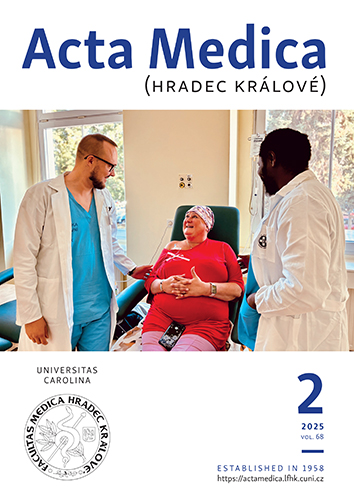ACTA MEDICA, Vol 59 No 3 (2016), 79–83
Wireless Capsule Enteroscopy in Healthy Volunteers
Ilja Tachecí, Petr Bradna, Tomáš Douda, Drahomíra Baštěcká, Marcela Kopáčová, Stanislav Rejchrt, Martin Lutonský, Tomáš Soukup, Jan Bureš
DOI: https://doi.org/10.14712/18059694.2016.93
published online: 08. 09. 2016
abstract
Introduction: The aim of our prospective study was to define endoscopy appearance of the small bowel in healthy volunteers. Method: Forty-two healthy volunteers underwent wireless capsule endoscopy, clinical investigation, laboratory tests, and completed a health-status questionnaire. All subjects were available for a 36-month clinical follow-up. Results: Eleven subjects (26%) had fully normal endoscopy findings. Remaining 31 persons (74%), being asymptomatic, with normal laboratory results, had some minor findings at wireless capsule endoscopy. Most of those heterogeneous findings were detected in the small intestine (27/31; 87%), like erosions and/or multiple red spots, diminutive polyps and tiny vascular lesions. During a 36-month clinical follow-up, all these 42 healthy volunteers remained asymptomatic, with fully normal laboratory control. Conclusions: Significant part of healthy subjects had abnormal findings at wireless capsule endoscopy. These findings had no clinical relevance, as all these persons remained fully asymptomatic during a 36-month follow-up. Such an endoscopic appearance would be previously evaluated as “pathological”. This is a principal report alerting that all findings of any control group of wireless capsule endoscopic studies must be evaluated with caution.
keywords: Small bowel; Wireless capsule enteroscopy; Healthy volunteers; 36-month follow-up

Wireless Capsule Enteroscopy in Healthy Volunteers is licensed under a Creative Commons Attribution 4.0 International License.
210 x 297 mm
periodicity: 4 x per year
print price: 150 czk
ISSN: 1211-4286
E-ISSN: 1805-9694
